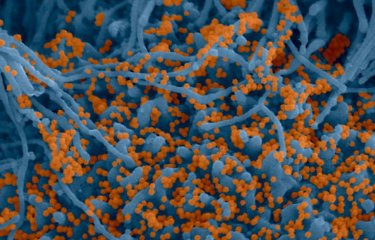-
News | 2019.03.06
Agnès Buzyn, Minister of Solidarity and Health visited the vectopole of the Institut Pasteur de la Guyane
At the end of her visit to French Guiana, Agnès Buzyn, Minister of Solidarity and Health, visited the vectopole of the Institut Pasteur de la Guyane on Friday 1 March 2019. During this visit, Agnès Buzyn met with the Institute's researchers to talk about their research, and how they monitor infectious diseases through the national reference centres funded by the Ministry of Health."The Minister...
-
News | 2019.03.07
International Women's Day 2019
International Women's Day is a great opportunity for the Institut Pasteur to reaffirm its commitment to strengthening its gender equality policy. It is vital that every individual, regardless of gender, is able to fully express their talent while working at the Institut Pasteur, especially in science. Improving career possibilities for women is one of the objectives of the Institut Pasteur 2019-...
-
Document de presse | 2019.03.19
Discovery of a crucial immune reaction when solid food is introduced that prevents inflammatory disorders
Microbes colonize all body surfaces and help to balance the immune system. In newborn infants, gut microbiota is first conditioned by breast milk components. When solid food is introduced, gut microbiota develops and bacteria proliferate. Scientists from the Institut Pasteur and Inserm have discovered that a key immune response is generated in mice when solid food is introduced and microbiota...
-
Report | 2019.03.25
The Institut Pasteur is addressing the major scientific and health issues facing the world today
In a world of unprecedented development, the Institut Pasteur needs to make every effort to adapt to the new realities of society and to take advantage of all the possibilities presented by the digital era. It has a responsibility to do so in its capacity as one of the world's leading institutes for scientific research in the area of human health. This is the aim of its Strategic Plan.
-
News | 2019.03.21
The issues of epidemiology with Arnaud Fontanet
What is public health? And epidemiology? This discipline is that of Arnaud Fontanet (Institut Pasteur, CNAM) who holds the chair of Public Health at the Collège de France (2018-2019). He explains all the interest of this new chair.Pr. Arnaud Fontanet (Institut Pasteur, CNAM) who holds the chair of Public Health at the Collège de France (2018-2019) explains the major issues of epidemiology. He...
-
Document de presse | 2019.04.15
A new bacteria-killing weapon in the fight against antibiotic resistance
When the first antibiotics were discovered in the early 20th century, the rate of death from infectious diseases fell dramatically. But the emergence of multidrug-resistant bacteria as a result of antibiotic misuse is raising fears that by 2050, these same diseases will once again become the leading cause of death worldwide. In a bid to boost the arsenal available to tackle this threat,...
-
Article | 2019.04.03
Pasteur International Joint Research Unit (PIU)
You are a leader of a team or a unit at Institut Pasteur and you want to create a framework of partnership with international teams on issues of common interest. You can apply for the creation of a Pasteur International joint research Unit (PIU).
-
Article | 2019.04.03
CALL FOR PROPOSALS 2019 Pasteur Joint International Research Unit Partnership within IPIN
To strengthen the partnership with institutes from the Institut Pasteur International Network (IPIN), the Institut Pasteur (IP) will support the creation of two Pasteur International Joint Research Units (PIU/IP-RIIP).
-
News | 2019.02.14
Renewal of the status of the Pasteur International Network Association as a "non-State actor in official relationship" with WHO
The renewal of the status of the International Pasteur Association Network- APIN "as a non-state actor in official relations" with WHO was confirmed by the Executive Board on 31 January 2019 for 3 years in accordance with a 2019-2021 collaboration plan, submitted in autumn 2018.
-
News | 2019.04.03
Discovery of a restriction factor for hepatitis B virus
Hepatitis B is a viral liver infection that can lead to acute or chronic conditions. Although there is a vaccine that offers protection against the virus, current treatments which prevent the virus from replicating are not curative for infected individuals. Scientists at the Institut Pasteur working in collaboration with the CNRS have demonstrated that a cellular protein is capable of acting as a...


